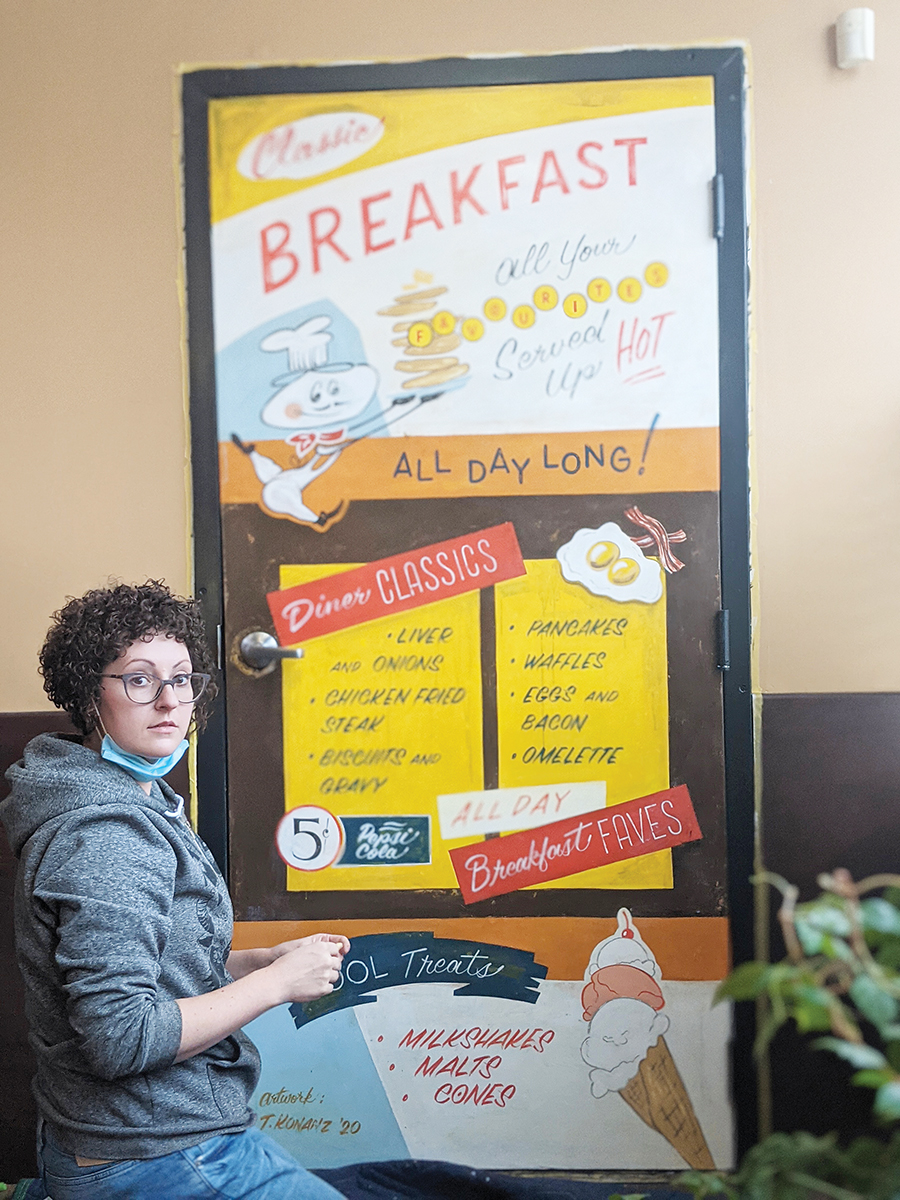In art and design, perspective plays a large role. And from Jennifer Konanz’s perspective, her role sucked.
It was 2012. She was at her first job post-grad from the University of Alberta, doing vinyl architectural graphic design — which is a fancy way of saying “computer printing corporate signs” — and she was unhappy. “I was working, doing graphic design, and I didn’t like the work environment. Art was just sort of on the side. I was like, I really hate this, so I quit.”
At this point of her career crisis, two fortunate things happened. Konanz saw the documentary, Sign Painters, at Edmonton’s Garneau Theatre, and her brother-in-law came back from Austin, Texas, raving about “this sign painter guy” who bent neon signs in his backyard. “My brother-in-law was showing me pictures of the signs and said, ‘You could do this here,’ and I was like, yeah.”
After an informal apprenticeship and a couple lean years, the happily former graphic artist has done a lot here with her company, now called Konanz & Co. Her one-of-a-kind, old timey signs are on display at Mercer Tavern, Sepp’s Pizza and Partake, as well as the purposely faded “ghost signs” telling the company’s logo history atop the Telus building that borders Neon Alley, across from Rogers Place.
She likes being her own boss, and making changes on the fly based on the environment she works in (when she’s not in her studio) — in the case of the sign she painted in Urban Diner, with patrons present, she adjusted the colours based on the restaurant’s vibe. “The hardest is when you just get a photo, and it’s like a disembodied window or wall, and you don’t see anything else. The best ones are if I’ve eaten there before, or at least hung out and felt the spirit of the place.”
On-site work provides happy accidents, too. She worked inside Bar Clementine alongside the owners as they created the space. And as they built up the bar’s classic European style, they made last-minute changes to almost every aspect along the way. While Konanz worked on the bathroom door signage, she’d see the new colours and finishes the owners applied to their work, and followed suit in her own way.
Then came time to gold gild the Clementine tree on the street-facing window, a process of hand-painting a design with size, a special glue, applying a thin coating of gold leaf and flaking off the excess. The owners went with gold-coloured aluminum. After 16 hours of design and drying, the giant tree was fully formed. Then it rained, which sealed some moisture in. “The aluminum turned, and so if you see it now, it looks like wrought iron. It doesn’t look like gold, but it looks like this really ancient tree. It totally changed. And when the owners saw it, they were like, ‘We love it.’ So it worked to their advantage.” It really is a matter of perspective.
